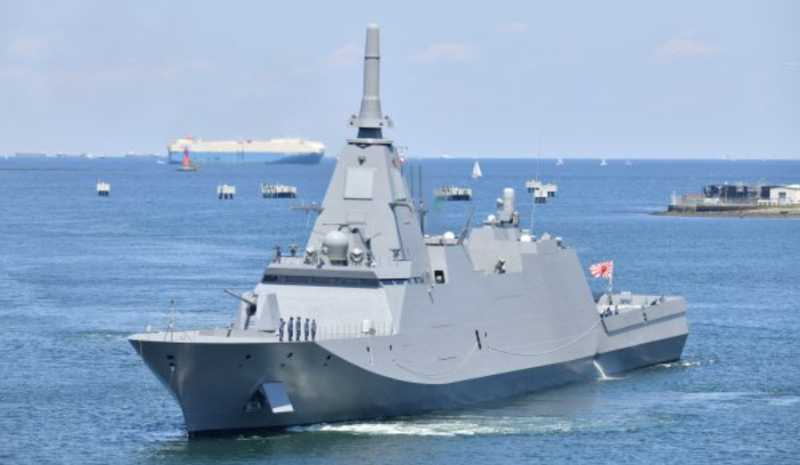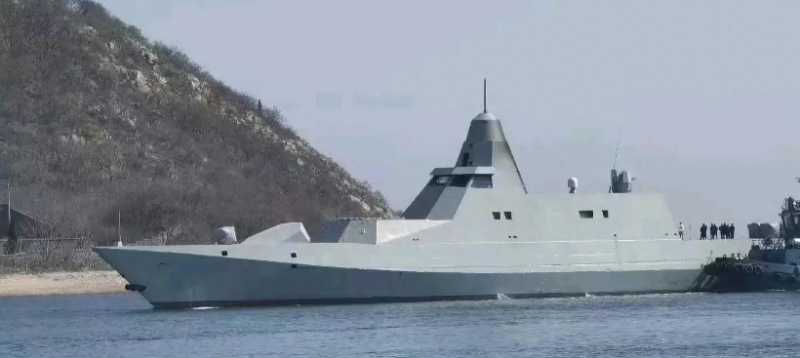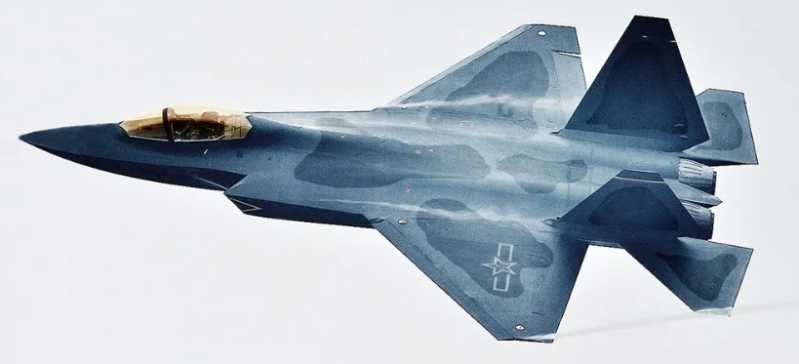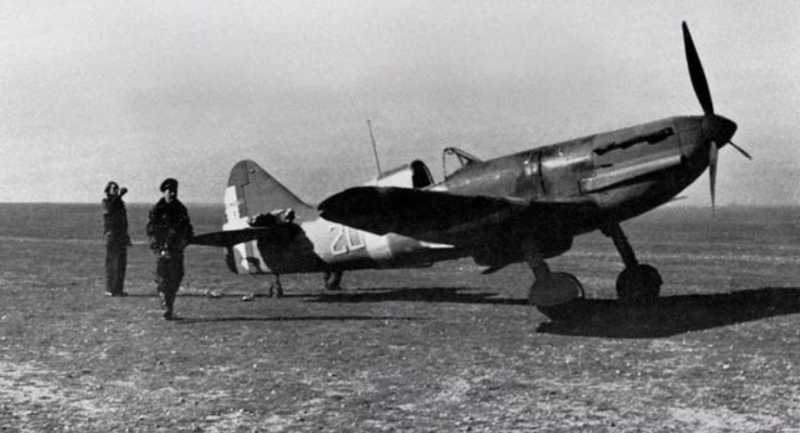Not long ago, at the "2023 Indo-Pacific International Maritime Expo" held in Sydney, Australia, Japan’s Mitsubishi Heavy Industries exhibited its new multi-purpose frigate (FFM) plan designed for the Maritime Self-Defense Force, which is an air defense enhanced version of the "Mogami" class frigate (30FFM). Mitsubishi Heavy Industries calls this future multi-purpose frigate plan FMF-AAW, and the Japanese Ministry of Defense calls it "new FFM". So, what are the improvements and differences of the FMF-AAW future multi-purpose frigate compared to the "Mogami" class?
"Mogami" class frigate
The FMF-AAW future multi-purpose frigate is an air defense enhanced frigate improved on the basis of the "Mogami" class frigate, so if you want to understand the FME-AAW future multi-purpose frigate, you must first understand the "Mogami" class frigate.
Construction background
The "Mogami" class frigate is a new type of frigate developed by Japan with advanced performance. It is mainly used to replace the old ships of the Maritime Self-Defense Force to deal with future maritime conflicts and threats. The Japanese Maritime Self-Defense Force is composed of the Self-Defense Fleet and five local teams. Among them, the Self-Defense Fleet is the main force, and the local teams are responsible for security and support. In recent years, the modernization level of the main ships of the Japanese Maritime Self-Defense Force’s Self-Defense Fleet has been continuously improved. However, the Japanese Maritime Self-Defense Force has invested less in the equipment construction of the local teams. It only allocates the missile destroyers eliminated by the Self-Defense Fleet to the local teams to deal with the threats near the coast together with the old "Abukuma" class, "Yubari" class and other missile frigates equipped by the local teams.
However, in recent years, as the warships of the Japanese Maritime Self-Defense Force’s local teams have been too old and their equipment has been seriously aging, it is difficult to adapt to the modern maritime combat environment. In 2014, the Japan Maritime Self-Defense Force proposed in the "Heisei 26 Mid-term Defense Force Preparation Plan" to build a new generation of Type B ships (Japan calls the ships assigned to the first-line "escort team" "Type A" and the ships assigned to the second-line local team "Type B") to replace the "Abukuma" class escort destroyers and "Hayabusa" class missile boats that are still in service, and will serve as the main ships of the local teams of the Maritime Self-Defense Force in the future, that is, 30FFM multi-purpose frigates.
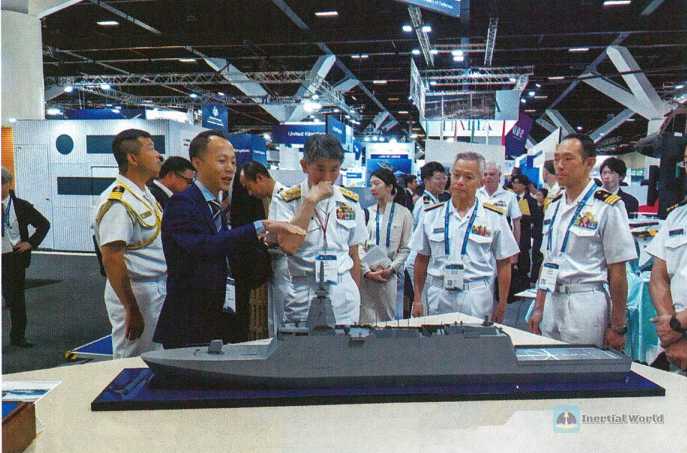
The 30FFM multi-purpose frigate was originally called the "Heisei 30th Annual Escort Destroyer" (30DEX), and the program was called the "Future Multi-Mission Frigate". However, with the shift of the focus of Japan’s maritime defense strategy, especially the intensification of the Taiwan Strait crisis and the maritime island disputes of neighboring countries, Japan feels that the maritime pressure it faces is increasing. For this reason, Japan decided to make a major adjustment to this naval armament development plan that originally had a "low starting point", especially to reposition the tasks that the new ship will undertake in the future. Japan believes that the design positioning of the new warship should change, and the tasks it undertakes cannot be limited to escort tasks. In the future, it must be able to undertake various combat tasks in "hot spots" so that Japan can maintain its maritime advantage in the ever-changing surrounding situation. Therefore, after some modifications, the plan evolved into the next-generation multi-purpose frigate development plan, and the name was changed to "Heisei 30th Annual Multi-Purpose Frigate (30FFM). FF stands for frigate, and "M" stands for "Multi-Purpose" (translated as "multi-functionality" in Japanese) that integrates the "mine" mission capability. This is similar to some of the concepts of the US Navy’s "Littoral Combat Ship". It is precisely because of this that, according to the previous model, the 30FFM also adopted some of the "Littoral Combat Ship" design. This is the "Mogami" class frigate.
Currently, 8 30FFM "Mogami" class frigates have been launched and 4 have been commissioned. Among them, the first "Mogami" was built in 2019 and will be commissioned in 2022; the No. 8 ship "Yobetsu" started construction in 2022 and was launched in November 2023, and is expected to be commissioned in 2025. It is worth mentioning that, unlike the previous "Mogami" class, this ship will be equipped with the MK-41 vertical launch system when it is delivered.
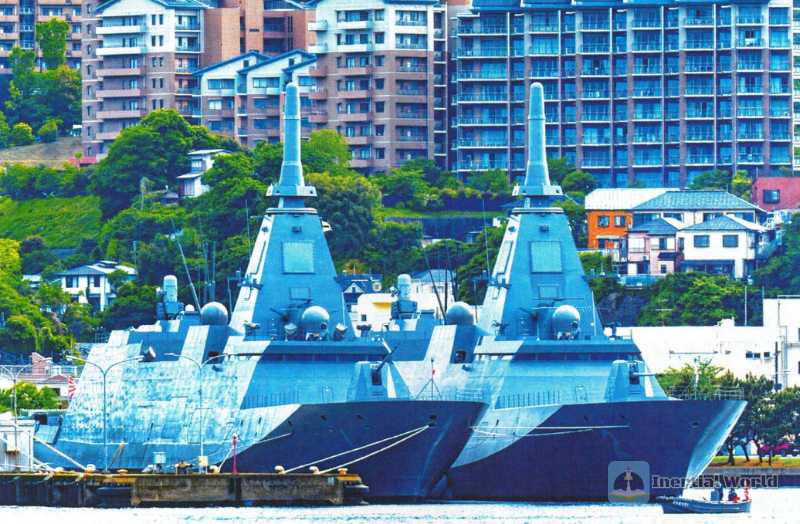
Ship design
According to the information disclosed by the Japanese side, the 30FFM "Mogami" class ship is 132 meters long and 16.3 meters wide, with a standard displacement of 3,900 tons, a full load displacement of 5,500 tons, and a maximum speed of 30 knots. The "Mogami" class adopts the design technology of the world’s mature stealth frigates, and follows the world’s "large-scale" development trend of frigates. The design emphasizes: stealth, anti-destruction, seaworthiness, maneuverability, and leaves enough room for future upgrades and modifications.
In terms of appearance, the "Mogami" class adopts the current popular oblique polygonal and fully enclosed "science fiction" exterior design of stealth frigates. The hull adopts a deep V displacement hull with a traditional long bow and a wave-breaking bulbous bow, and the hull above the waterline is tilted inward. The "Mogami" class adopts an inclined straight bow design, which is more conducive to reducing navigation resistance and increasing speed. It adopts a wider square stern design to facilitate the setting of a helicopter landing and take-off platform. The flat design of the front bow is convenient for the arrangement of shipborne weapons.

The "Mogami" class frigate adopts a highly enclosed hull superstructure design, and the hull structure is neat and compact, with good stealth performance and navigation performance. According to Japanese media reports, the "Mogami" class frigate uses stealth technology similar to that of Japan’s "Shinshin" stealth fighter. It uses advanced wave-absorbing materials to manufacture the upper hull, and ensures that the hull surface is smooth and the equipment is integrated to reduce radar and infrared characteristics. For example, the superstructure of the hull is tilted inward, and the outer intersection adopts an arc transition; the bridge design is similar to the French "Wind Chaser" class frigate, with cut corners on both sides; anchoring equipment and life-saving equipment are installed inside the hull, effectively reducing the reflection intensity of radar signals; a cold air inlet is set on the hull to mix the high-temperature exhaust gas generated by the gas turbine with a large amount of cold air to achieve the effect of reducing the temperature of the chimney exhaust port and reducing infrared characteristics. In addition, the "Mogami" class frigate also has a seawater spray system installed around the chimney to further cool the exhaust gas.
The biggest feature of the "Mogami" class is the use of a closed integrated mast and a multifunctional integrated radio frequency system. The integrated mast uses a flame-retardant multilayer sandwich composite material composed of glass fiber and carbon fiber, and adopts an advanced integral casting process. The entire superstructure is formed in one piece. Its closed integrated mast integrates antennas/arrays/sensors such as multifunctional radar, communications, data links, identification of friend or foe, electronic warfare (electronic support/electronic attack), and optoelectronic equipment, and some of them use a shared aperture design. Although this technology has been put into practical use on the US DDG-1000, the British Type 45 destroyer (advanced technology mast) and my country’s latest destroyers, it is the first time that it has been used on Japan’s active combat ships. Compared with ordinary masts, closed integrated masts and shipborne multifunctional integrated radio frequency systems have many advantages. Their common structural design can reduce various negative effects such as the ship’s radar scattering cross-sectional area and improve stealth performance; reduce the number of radio frequency antennas on the whole ship, improve the electromagnetic environment of the ship, and give full play to the maximum performance of each radio frequency device; can efficiently and comprehensively control the power resources, frequency domain resources, and time resources of the radio frequency equipment on the whole ship, and achieve optimal resource allocation and scheduling; it also has the advantages of low maintenance cost and easy maintenance.
In order to enhance the anti-destruction capability, the hull and superstructure are all made of steel structure, and important systems are all reinforced with impact resistance, especially the combat parts exposed outside the main hull, which are made of high-carbon nickel-chromium-molybdenum steel with strong impact resistance. The whole ship is equipped with a filtering and ventilation system for three defenses (protection against nuclear, biological and chemical weapons). In the case of nuclear, biological and chemical weapons attack, the ship’s internal pressurization system is activated to make the cabin pressure higher than the outside and completely isolated from the outside air. The cleaning area is also completely isolated from the ship’s internal filtering and ventilation system, and a high-power sprinkler is also installed on the deck.
In addition, the Mogami class has two openings at the stern. The larger opening is a submerged dock for releasing and recovering unmanned underwater vehicles (UUVs) and unmanned surface vehicles (USVs); the smaller opening is for the use of the latest O QQ-25 active/passive composite towed array sonar. It is worth mentioning that the Mogami class adopts a modular design, which greatly shortens the construction period.


Power system
In terms of the power system, the "Mogami" class frigate uses a diesel-gas alternating (CODAG) power system, equipped with a British Rolls-Royce MT-30 shipborne gas turbine (maximum power 36 MW) and two German MAN-12V28/33D diesel engines (single unit power 6 MW), with a total output of 64,000 horsepower and a maximum speed of more than 30 knots, far exceeding the "Abukuma" class.
The biggest feature of the CODAG system is that it can effectively reduce the fuel consumption of ships, with good economy and high reliability, and has been widely adopted by navies of many countries. However, the disadvantages of this power system are also very obvious, and it cannot bring out the maximum power of all shipborne engines. The maximum speed of the "Mogami" class frigate is only 30 knots. Although it has reached the level of general mainstream frigates, it is quite different from the 45 speed of the US Navy LCS littoral combat ship.
In recent years, most of the new surface combat ships commissioned by the Japan Maritime Self-Defense Force use the all-combined fuel (COGAG) power system, while the 25DD and 26DD of the "Asahi" class destroyers use the innovatively designed gas-electric combined (COGLAG) power system, and more advanced integrated all-electric propulsion power systems are also being actively developed. However, the "Mogami" class chose to be equipped with a relatively "low-end" CODAG system, mainly for the purpose of ensuring its construction progress and cost control. Both the Japanese Ministry of Defense and the Maritime Self-Defense Force hope to avoid increasing expenses or extending delivery time by introducing overly advanced and complex power systems for the "Mogami" class frigates.
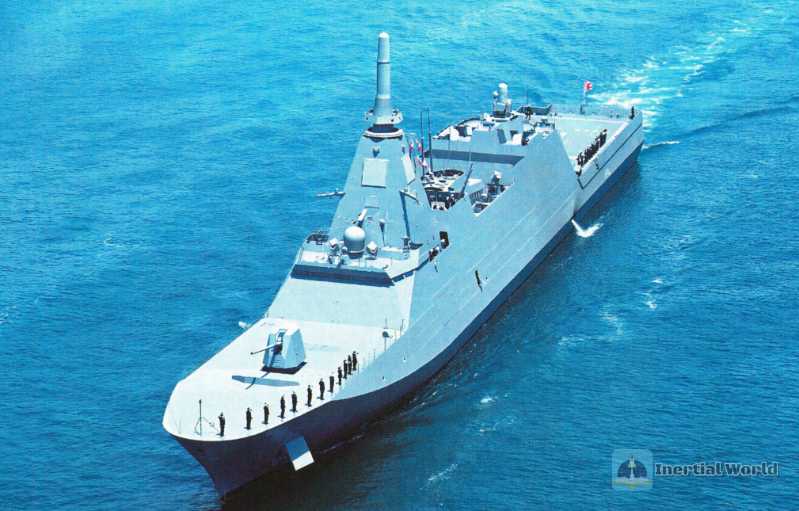
Weapon system
The "Mogami" class is a multifunctional new ship built by the Japan Maritime Self-Defense Force to meet the needs of future offshore operations and near-shore patrol operations. It can perform a variety of combat missions, including land strikes, anti-submarine, anti-ship, air defense, anti-mine, mine laying, escort, patrol monitoring, etc. For this reason, Japan has selected a large number of advanced and effective shipborne weapons for the "Mogami" class.
A 127mm Mk45 Mod4 naval gun is installed on the bow deck. The Mk45 Mod4 naval gun is the latest model of the US Navy’s Mk45 naval gun family and the only naval gun in service in the US Navy that can fire new ammunition. It is reported that in addition to being able to launch various conventional shells used by Mk45 Mod2, Mk45 Mod4 can also launch low-cost competitive ammunition newly developed by the US Navy, Mk172 new submunitions and their high-energy propellant, etc., which has great advantages in ground/ship attack capabilities.
In order to improve the maritime air defense capability, the rear of the "Mogami" class naval gun is equipped with two 8-mounted MK41 vertical launch systems, which can launch "Sea Sparrow" short-range ship-to-air missiles. "Sea Sparrow" is the most widely used short-range ship-to-air missile in the West. The "Mogami" class will use the RIM-7M type in the future, which is also the most used model in various countries. The RIM-7M missile is 3.66 meters long and weighs 227 kilograms. The maximum range of the missile is 18 kilometers: the maximum combat altitude is 5 kilometers, the maximum flight speed is 2.5 Mach, and it uses the WAU-17/B shaped charge blasting warhead, weighing 40 kilograms, and has strong anti-electronic interference and low-altitude anti-missile capabilities. The "Sea Sparrow" ship-to-air missile is an all-weather short-range, low-altitude ship-borne air defense missile weapon system, mainly used to deal with low-altitude aircraft, helicopters and anti-ship missiles.
As the terminal defense of the ship, the "Mogami" class is equipped with a "SeaRAM" short-range defense system above the hangar. The missile launched by "SeaRAM" is the RIM-116 missile, which adopts infrared and passive radar dual-mode guidance, with a flight speed of 2 Mach, an effective firing height of 5,000 meters, and a maximum range of 9.6 kilometers. The "SeaRAM" system is an independent anti-missile system that does not rely on external information systems. It greatly enhances the current ability of ships to fight against anti-ship cruise missiles.
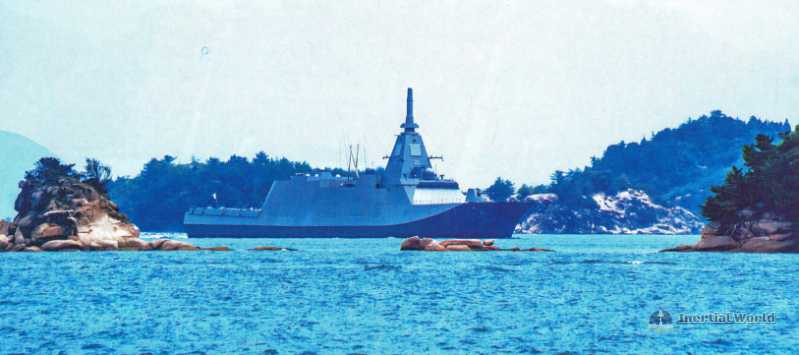

In order to enhance the anti-ship capability, the "Mogami" class is equipped with two quadruple "17-type ship-to-ship missile" launchers in the middle of the ship. This is a slightly improved version of the Japanese-made 90-type anti-ship missile. The main improvements are in range and anti-interference capabilities. Japan claims that it has "longer range, higher accuracy and better anti-interception capabilities."
In terms of anti-submarine capabilities, the anti-submarine weapons of the "Mogami" class mainly include 16 MK41 vertical launch units equipped with RUM-139 "Asroc" anti-submarine missiles, with 16 missiles in reserve. There are also two HOS-302 (68-type) rotary triple-mounted 324mm torpedo tubes on both sides of the rear of the ship, which are remotely controlled to launch M K46Mod5 anti-submarine torpedo and Type 73 light anti-submarine torpedo. Among them, the RUM-139 "Asroc" anti-submarine missile has a maximum range of 28 kilometers and can attack submarines at a depth of 40 to 1,000 meters.
It is worth mentioning that the "Mogami" class frigate can also carry an SH-60K helicopter. The ship-borne SH-60K helicopter will also play an important role in air anti-submarine warfare. Its anti-submarine combat equipment has been fully updated, basically the same as the M developed at the same time by the United States. The same level as the H-60R anti-submarine helicopter. The SH-60K is equipped with a new generation of HQS-14 low-frequency dipping immersion sonar, and the belly radar is also replaced with the HP-105B multi-mode inverse synthetic aperture radar, which can depict the target outline when tracking a moving target and has target identification capabilities.
In addition, the "Mogami" class frigate also has strong anti-mine and mine-laying capabilities. Under its aviation deck is the mine mission cabin. In terms of anti-torpedo, it is similar to the littoral combat ship and can hide anti-mine vehicles. It can carry unmanned watercraft (USV), unmanned underwater vehicle (UUV) and self-propelled anti-mine ammunition (EMD) to perform mine search and anti-mine missions. It basically uses the latest "Awaji" class anti-mine ship equipment. Among them, the self-propelled anti-mine ammunition was developed by Mitsui of Japan, with a total length of 1.8 meters and a total weight of 90 kilograms. It uses lithium-sulfur dioxide. Disposable batteries drive three horizontal propellers and one vertical propeller, and cooperate with scanning sonar to actively collide with mines. It is a disposable anti-mine ammunition; there is also the Type 04 self-propelled minesweeping submarine, which is a fiber-optic remote-controlled submarine that clears mines through a multi-functional mechanical arm and a small minesweeper. In addition, the "Mogami" class can also perform mine laying tasks. The ship can accommodate 32 Type 91 mines, which are Japanese-made bottom-sinking and buoyant mines. After entering the water, it sinks to the bottom of the water, and floats the mine to a certain depth through the anchor chain according to the preset or water depth, and is triggered by a combination of magnetic field and pressure signals. Obviously, the "Mogami" class frigate can be equipped with different mission modules according to needs, and can carry out different tasks such as air defense, anti-submarine, anti-mine, mine laying, special operations, etc., with high mission flexibility and multi-purpose capabilities.
mines. In addition, the "Mogami" class can also perform mine laying tasks. The ship can accommodate 32 Type 91 mines, which are Japanese-made bottom-sinking and floating mines. After entering the water, it sinks to the bottom of the water. According to the preset or water depth, the mine is floated to a certain depth through the anchor chain, and is triggered by a combination of magnetic field and pressure signals.
. Obviously, the "Mogami" class frigate can be equipped with different mission modules according to needs, and can carry out different tasks such as air defense, anti-submarine, anti-mine, mine laying, special operations, etc., with high mission flexibility and multi-purpose capabilities.
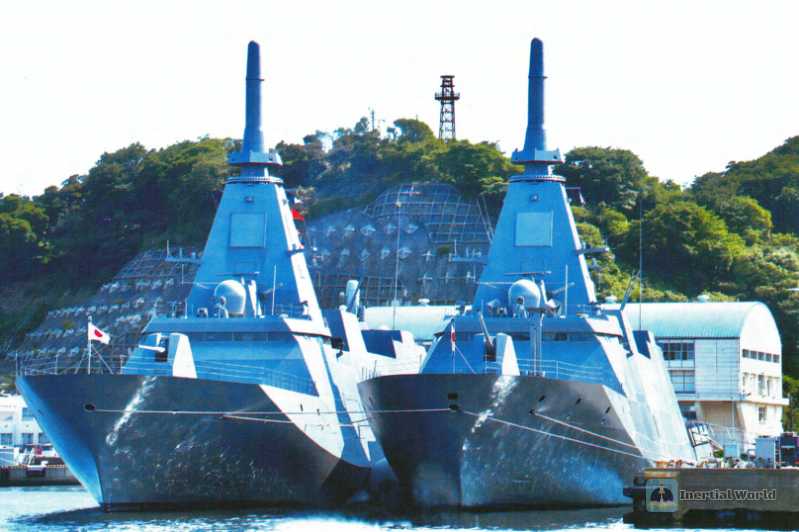
Ship electrical system
The "Mogami" class frigate is equipped with various advanced radar detection and electronic equipment, and is a first-class ship with a high degree of informationization. Compared with the "Abukuma" class frigate, the biggest leap in electronic equipment of the "Mogami" class frigate is that the CEC system will be equipped in the columnar structure at the top of the tetrahedron main mast, which is also the main highlight of the ship. The CEC system is also called the "Cooperative Engagement Capability System", which is a real-time sensor network system composed of software and hardware developed by the United States under the concept of "Network-Centric Warfare". In coordinated operations, CEC can connect the sensors of all ships and aircraft through the network, and integrate the sensor data into a single synthetic track image of real-time fire control quality, and distribute the air threat target information to each ship in the formation at the same time, so that the distance of the ship to deal with the enemy missile is far beyond the radar line of sight of the ship, thereby greatly improving the regional local and self-defense capabilities. The system has strong anti-interference ability and improves the battlefield situation awareness ability of ships at sea.
The tetrahedral integrated mast of the "Mogami" class frigate is equipped with four large and small combinations of phased array radar arrays, which are OPY-2 X-band multi-function phased array radar antenna array panels. This type of radar is an improved version of the FCS-3 active phased array radar developed by Japan, and is known as the "Yamato Aegis". The maximum detection range of the OPY-2 type is between 200-360 kilometers, and it can track about 300 air and surface targets at the same time, with a strong ability to resist "saturation strikes". At the same time, its detection accuracy is high. The Japanese side claims that it can not only detect and accurately track low-altitude and high-speed targets such as anti-ship missiles, but can even track 127mm naval gun shells, which can be compared with the AN/SPY-1D passive phased array radar of the American "Aegis" system installed on the Kongo, Atago, and Maya classes that have not yet been put into service. And below the C-band radar, there are 4 X-band radars. This constitutes the currently popular dual-band radar system, which not only has a wider detection range, It also has stronger detection accuracy.
In order to make up for the fact that the "Mogami" class does not have a fixed array active sonar installed on the bow and improve its anti-submarine warfare capabilities, it is equipped with two different towed sonar systems at the stern: variable depth active sonar (VDS) and towed array passive sonar (TASS), which are very effective for detecting underwater targets at great depths. The "Mogami" class can combine the ship’s TASS and VDS to have dual-base detection capabilities. In addition, multiple "Mogami" class frigates can cooperate with each other in combat or with other ship formations to complete the "composite" detection function between different platforms, further expanding the application field of anti-submarine warfare, and can also participate in anti-mine warfare when necessary.
"Mogami" class frigates The ship can not only serve as a combat firepower ship of the Japan Maritime Self-Defense Force, but also become a network information node for the entire Japan Self-Defense Force combat unit. The "Mogami" class’s combat command center used AR augmented reality technology for the first time, using sensors at different angles for 360-degree all-weather monitoring. AR augmented reality technology enables combat commanders to perceive battlefield space changes in a more three-dimensional and realistic manner. It also uses a 360-degree surround large display screen and uses an artificial intelligence system to display relevant information on a split screen, shortening the decision-making response time for responding to maritime threats. The "Mogami" class is equipped with a C4ISR system, which can serve as an important battlefield information node on a single ship to enhance the fleet’s overall situational awareness and combat capabilities. The C4ISR system installed on the ship can connect to the Self-Defense Force’s senior command post and the base command post. This combat unit receives images from the Air Self-Defense Force’s automated command system and transmits the information it detects. At the same time, the information center is integrated with the CEC system to enhance the ability to cooperate with the US Navy.
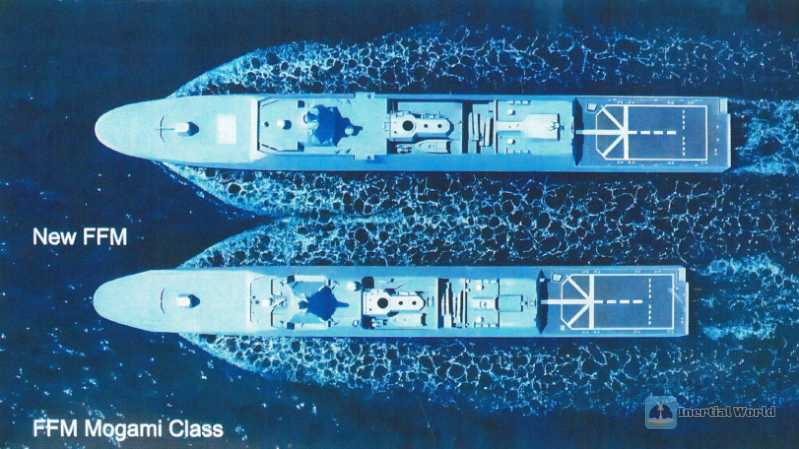
FMF-AAW’s future multi-purpose frigate
Compared to the "Mogami" class frigate, the changes to the FMF-AAW future multi-purpose frigate are mainly concentrated in the following three aspects:
First, the hull is further enlarged, and its length, width and displacement have increased. It is reported that the ship is 142 meters long, 17.4 meters wide, and has a full load displacement of 6,200 tons. In contrast, the "Mogami" class frigate is 132 meters long, 16.3 meters wide, and has a full load displacement of 5,500 tons. In addition, judging from the model, the midship area is significantly larger, which may be accompanied by a significant improvement in anti-ship missiles. The increase in the hull means that the ship can be equipped with more equipment to meet the needs of future naval warfare environments.
Second, the appearance has been slightly modified and the layout is more reasonable. The FMF-AAW future multi-purpose frigate has also made many details improvements on the basis of the overall layout design of the "Mogami" class superstructure, which is more scientific and reasonable. For example, the bow deck and bridge have been raised, and an observation walkway has been set up in front of the bridge window; the helicopter landing deck has been changed from the inward slope design that has been criticized in actual use to a normal parallel to the waterline, but it is still a single hangar, and the helicopter configuration is also the same as the "Mogami" class. Third, the radar system is more advanced. It is reported that the FMF-AAW continues the integrated mast of the "Mogami" class, but the four-prism closed mast is modified to an octagonal closed mast to accommodate a larger and more complex radar array, and may even add the S band to the 4C+4X radar fixed array of the "original Mogami" to further enhance the detection capability.
In addition, the new phased array radar system will readjust the direction of the integrated mast. Based on the feedback from the Japan Maritime Self-Defense Force, Mitsubishi Heavy Industries decided to adjust the fixed panel angle of the main mast radar to 45 degrees. Compared with the front, rear and side installation design of the "Mogami" class, this design will improve the radar coverage and scanning capability.
Fourth, stronger air defense capability. Since the FMF-AAW future multi-purpose frigate is called a regional air defense type, it naturally focuses more on and emphasizes air defense capabilities. It is reported that FMF-AAW will increase the two groups of 8-unit MK-41 vertical launch systems with a total of 16 units at the bow of the "Mogami" class to four groups of 8-unit MK-41 vertical launch systems with a total of 32 units. In terms of missiles, it is the same as the "Mogami" class. It is currently temporarily equipped with a mix of "Sea Sparrow" short-range ship-to-air missiles and RUM-139 "Asroc" anti-submarine missiles. Other shipborne weapons are similar to the "Mogami" class.
In terms of power system, the FMF-AAW future multi-purpose frigate is the same as the "Mogami" class, using a combination of dual diesel engines and a single gas turbine (CODAG) with a maximum speed of more than 30 knots.
In short, although the FMF-AAW future multi-purpose frigate has only undergone minor repairs and modifications on the basis of the "Mogami" class, its combat capability has been further improved, especially in terms of weapon configuration. In terms of air defense capability, the bow of the future FMF-AAW multi-purpose frigate will be equipped with four sets of 8-unit MK-41 vertical launch systems with a total of 32 units. If all of them are loaded with "Sea Sparrow" ship-to-air missiles, the number will double, and the air defense capability will undoubtedly be stronger. The MK-41 vertical launch system can not only launch "Sea Sparrow" ship-to-air missiles, but also launch "Asroc" anti-submarine missiles, which means that the anti-submarine capability has also been greatly improved compared to the original. According to the needs of combat, FMF-AAW can flexibly and reasonably match the proportion and number of ship-to-air missiles and anti-submarine missiles in the 32-unit MK-41 vertical launch system to cope with different combat environments and combat missions. In addition, from the model point of view, the midship area of the future FMF-AAW multi-purpose frigate has been significantly enlarged, which means that its anti-ship missile system has also been improved and upgraded accordingly, and the number of anti-ship missiles may also be increased, and the anti-ship combat capability has also been improved compared to the "Mogami" level. It can be said that although the FMF-AAW future multi-purpose frigate has only undergone "minor repairs and modifications", its combat capability has been comprehensively improved and should not be underestimated.
proportion and quantity to cope with different combat environments and combat tasks. In addition, from the model point of view, the midship area of the future FMF-AAW multi-purpose frigate has been significantly enlarged, which means that its anti-ship missile system has also been improved and upgraded accordingly, and the number of anti-ship missiles carried may also be increased, and the anti-ship combat capability has also been improved compared to the "Mogami" class. It can be said that although the FMF-AAW future multi-purpose frigate has only undergone "minor repairs and modifications", its combat capability has been comprehensively improved and should not be underestimated.
Construction and procurement plan
Currently, the Japan Maritime Self-Defense Force has revised the procurement and construction plan of the FFM project. The number of "Mogami" class ships to be built has been finalized to 12, after which 12 FMF-AAW future multi-purpose frigates with enhanced air defense performance will be built, and the total number of FFMs will reach 24. The completion schedule provided by Mitsubishi representatives is 9 years. The first two hulls will be built at Mitsubishi Heavy Industries’ shipyards in Nagasaki and Tamano, which will take 4 years. Starting in 2031, the remaining 10 hulls will be built at a rate of 2 per year, and the entire production process will be completed by 2036.
According to the "Defense Force Preparation Plan" released by the Japanese Ministry of Defense on December 16, 2022, the Japan Maritime Self-Defense Force will retire all of its "Asagiri" class destroyers by 2027, and begin to transfer the "Murasame" class and "Takami" class destroyers from the "Mobile Operation Force" to the "Regional Deployment Force", and retreat to the second line. The FMF-AAW future multi-purpose frigate will fill this gap. This means that the combination of the "Mogami" class and the FMF-AAW will replace the "Murasame" class and the "Takami" class. In the future, the Japanese Maritime Self-Defense Force will form a "Aegis Ship" + "Mogami Ship" pattern, changing from "DD+DDG" to "FFM+DDG", which is very similar to the ideas adopted by Italy and France in the "European Multi-Mission Frigate" (FREMM).
The main reasons why Japan chose to use the "Mogami" class frigate to replace the "Asagi" class, "Murasame" class, "Takami" class and other destroyers in the Maritime Self-Defense Force are as follows:
First, these destroyers were produced earlier, their performance is outdated, and they are difficult to adapt to the needs of modern naval warfare. They have also reached retirement age and are in urgent need of new ships;
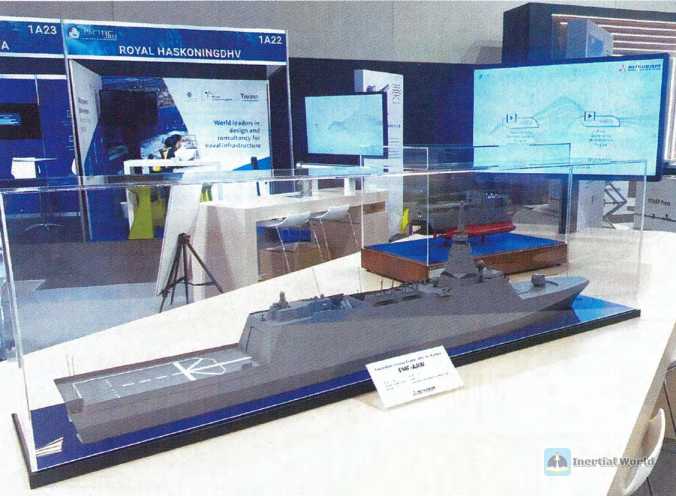
Secondly, although FFM is a frigate, its tonnage is not inferior to those old destroyers in the Maritime Self-Defense Force, and its advancement and combat capability are still better, so it can completely replace them. At the same time, FFM adopts a modular design, has a large transformation space and upgrade prospects, and can also quickly realize technical upgrades in the future to adapt to future combat needs and enrich the combat capabilities of the Japan Maritime Self-Defense Force.
Finally, developing and producing a new destroyer is not only costly, but also takes a long time, and it is impossible to replace it in a short time. However, the FFM frigate is different. The ship adopts modular and mature technical design in design and manufacturing, and the construction period is short. For example, from the construction of the first "Mogami" class "Mogami" to the present, only four years have passed, and 8 ships have been launched and 4 have been put into service. The speed is not slow.
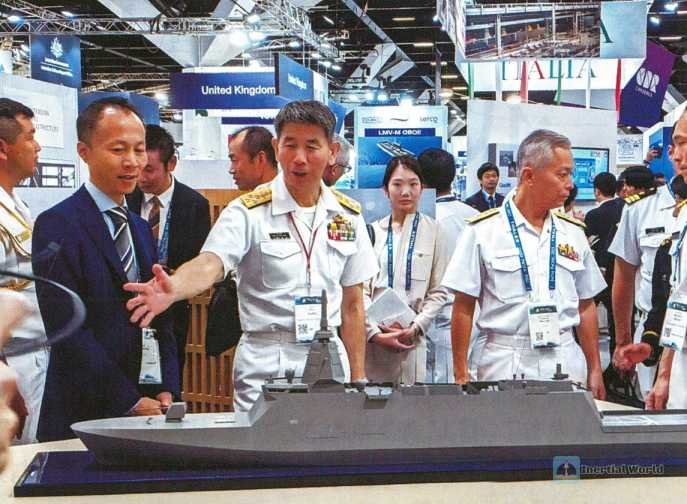
Japan’s Mitsubishi Heavy Industries stated at the exhibition that it plans to actively promote the Japanese Maritime Self-Defense Force to continue to build 12 FMF-AAW future multi-purpose frigates from 2027 after completing the current construction plan of 12 "Mogami" class ships. The number of 24 "Mogami" class ships can completely replace the number of 9 "Murasame" + 5 "Takami" + 6 "Akizuki", and realize the overall replacement of the Japanese Maritime Self-Defense Force DD fleet by 2036.
In addition, the FMF-AAW future multi-purpose frigate also has broad export prospects. The ship caters to the "large-scale development trend of frigates with high redundancy and multi-load" emerging from Europe. It has many advantages such as good stealth, high maneuverability, strong firepower, advanced ship electrical system, and strong multi-purpose capability. It also has a large upgrade and transformation space. It is very suitable for some countries that lack advanced maritime ships but have limited military expenditures. It has certain export prospects.
Mitsubishi Heavy Industries launched the FMF-AAW future multi-purpose frigate at the "2023 Indo-Pacific International Maritime Exhibition". It may have this intention, because the current needs of the Royal Australian Navy for the first and second level warships have not been resolved. Japan is very likely to take the opportunity to promote the FMF-AAW future multi-purpose frigate. When the interviewer asked whether they intended to provide the design to the Royal Australian Navy, Mitsubishi Heavy Industries officials refused to answer directly, but emphasized that the company is committed to attracting users’ interest in the frigate design abroad.


